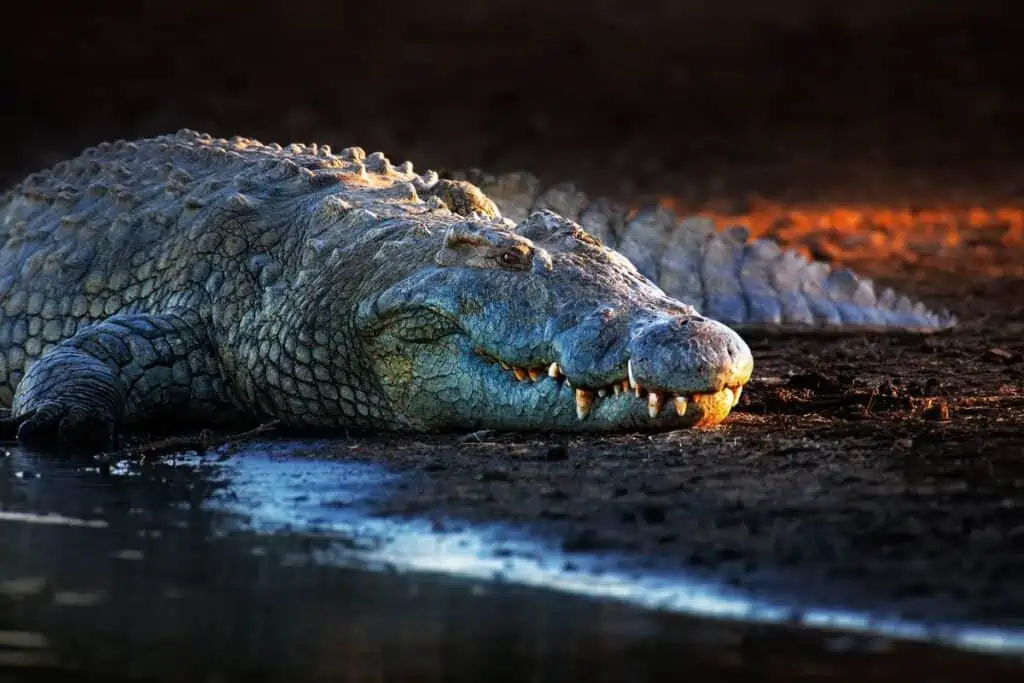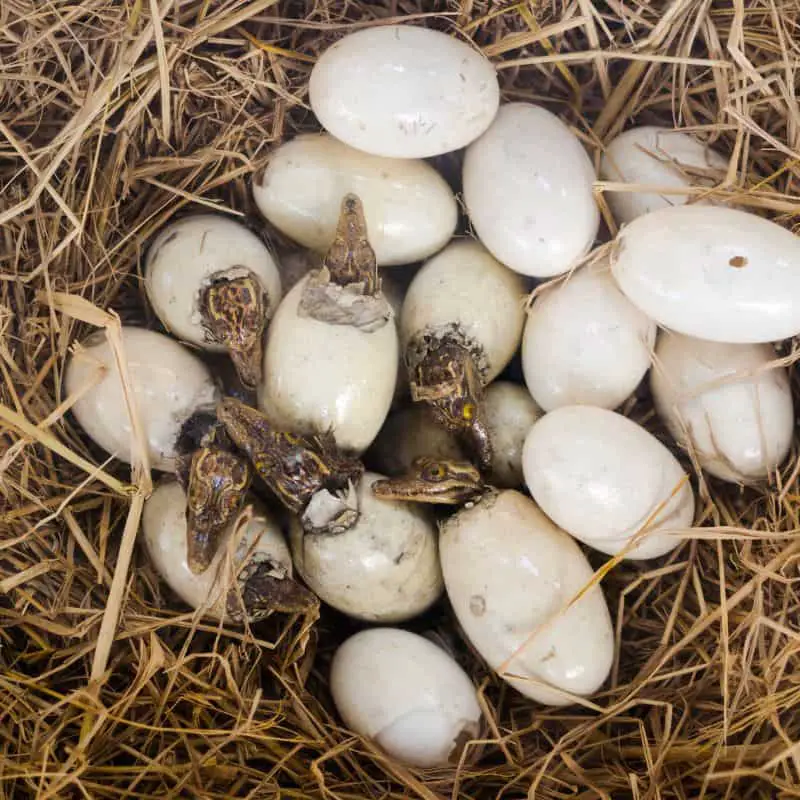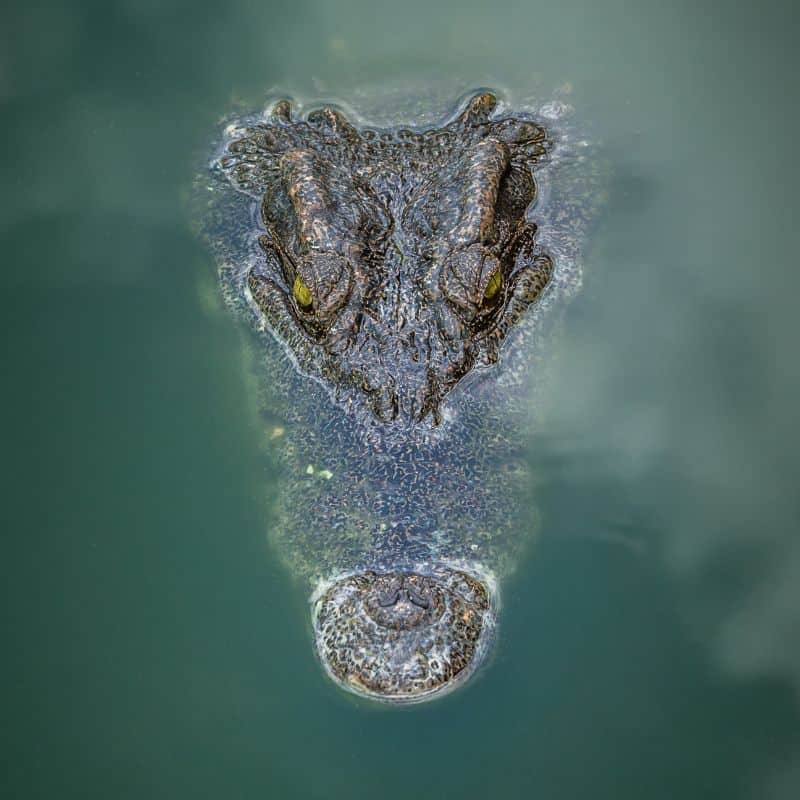Crocodiles have an appearance that can leave some confusion at first glance. Are they amphibians? Are crocodiles reptiles? Let’s clear this up for good.
According to scientific taxonomic classification, crocodiles are reptiles falling under the subgroup Crocodilia. Reptiles lay eggs and have cold blood, hard scales covering their body, and well-developed lungs while also depending on their environment to assist with temperature regulation.
The lifecycle and behavior of a crocodile depend on how they navigate the characteristics of their species, such as the fact that they are cold-blooded, lay eggs, and have physical differences, even from other reptiles.
To fully understand how animals are categorized and where crocodiles fit in, you need to identify the features of the various classes to highlight the differences between species.

The Scientific Classification Of Crocodile As A Species
The way organisms are subdivided for study into smaller groups with specific common characteristics is referred to as taxonomy.
The taxonomic hierarchy identifies seven main classifications: kingdom, phylum, class, order, family, genus, and species.
Crocodiles are animals, which means they should fall in the “Regnum animale” category within the kingdom hierarchy.
At the second level of the taxonomic convention, the phylum, the animals most people recognize as vertebrates, are identifiable by noticing the presence of spinal cords, distinct heads, dedicated nostril openings, and a tail at the end of their body above the anus.
The third step in vertebrate taxonomy divides them into major classes: mammals, birds, fish, amphibians, and reptiles.
The members of each class share specific characteristics and are eliminated as candidates for other classes based on the lack of those features.
The Difference Between Crocodiles And Other Species Classes
Mammals and birds are warm-blooded animals covered in fur or feathers respectively.
Mammals are also characterized by mammary glands (i.e., they produce milk to feed their babies), the neocortical brain region, and three middle ear bones.
Birds have lightweight skeletons, beaks, four-chambered hearts, high metabolic rates, and reproduce by laying eggs.
We find (most) fish, amphibians, and reptiles on the cold-blooded spectrum of vertebrate animals.
Fish are aquatic animals with well-defined skulls and gills but no digits on their limbs. Amphibians can live in the water or on land, have skins rather than scales, at least partially breathe through their skins, and their larvae undergo water-based metamorphosis (radical developmental change) before reaching adult form.
Crocodiles fall within the crocodilian subgroup of reptiles. Reptiles near-universally lay eggs but differ from amphibians by not having aquatic metamorphic stages and not having breathable skin.
Other types of reptilians are sub-grouped as squamates, turtles, and rhynchocephalians.
Crocodiles are cold-blooded and do not have fur or feathers, so they cannot be mammals or birds.
Also, crocodiles have scaly skin through which they cannot breathe, rely on lungs, and have no aquatic larval stage, so they cannot be amphibians. And while crocodiles spend a significant amount of time living in the water, they don’t have gills but limbs that carry digits.
The taxonomic classification of crocodiles can proceed as follows:
| Kingdom: | Animalia |
| Phylum: | Chordata |
| Class: | Reptilia |
| Order: | Crocodilia |
Characteristics Of Crocodile Eggs

Reptile eggs differ from the eggs of birds, fish, and amphibians concerning their texture and porousness. Crocodile eggs have a protective shell, but oxygen can still enter, and carbon dioxide can be excreted.
As their eggs are still soft, crocodiles lay them on riverbeds, on the banks of lakes, and in rotten vegetation. However, several crocodile species prefer to bury them beneath the soil to hide them from opportunistic feeders.
Another fascinating feature of crocodile eggs relates to how nesting temperature during the second trimester determines sex.
When the weather conditions are temperate, the eggs hatch as male, while the hatchlings tend to be female at higher or lower extremes.
After around three months, the crocodile eggs are ready to hatch, and the little crocodiles will actively call out for their parents before they emerge.
The mother, but sometimes the father, will respond to their call, dig them out, and seek to protect as many of them as possible for approximately the following year.
How Do Crocodiles Regulate Their Body Temperatures?
Unlike humans, and other mammals, which are endothermic (or warm-blooded) and can regulate their body temperature, reptiles are exothermic (cold-blooded) and rely on external heat sources for temperature regulation.
Crocodiles prefer a body temperature between 86- and 91 degrees Fahrenheit, so they will attempt to raise or decrease their temperature by using their surroundings.
Crocodiles don’t sweat or derive much heat from their food. Instead, they rely on the heat in their environment to help them with digestion and temperature regulation.
Crocodiles will bask in the sun or immerse themselves in cooler water for minor increases or decreases in their body temperature.

If reptiles cannot actively induce changes to their body temperature during colder periods or droughts, they resort to a state of semi-hibernation called aestivation. During aestivation, the crocodiles will dig a burrow into a riverbed and settle for an extended sleep period.
One advantage to being cold-blooded for crocodiles is that they have slower metabolisms and can last for substantial amounts of time without needing to feed.
During periods of drought or lack of prey, crocodiles will remain as stationary as possible while waiting patiently for their next meal.
Related to the slower metabolism is a controlled growth rate, which allows them to live for longer and age more slowly.
Physical Characteristics Of Crocodiles Vs. Other Reptiles
Crocodiles have more webbing in their feet than other reptiles, allowing for better shallow-water movement. In deeper water, they prefer to tuck their legs in and swim.
Among reptiles, another peculiarity of crocodiles relates to how they move on land. Rather than moving their limbs sideways, crocodiles use a vertical posture where they lift their feet high and flex their bodies up and down.
Like most reptiles, crocodiles can live for many years, and some can live for over a hundred years.
Because crocodiles have a slow metabolism, they can last for more extended periods on end without feeding, don’t age as quickly as other animals, and have slower heartbeats.
And while crocodiles shed their skin, they don’t do so all at once as other reptiles do, but rather only shed a few scales at a time.

Crocodiles have nostrils and eyes at the top of their skulls, which allows them to submerge themselves further in the water and strike their prey unawares.
Another unique adaptation that improves crocodiles’ ability while hunting underwater is the presence of a secondary palate that blocks water from flowing down their throats and into their airways, effectively preventing water inhalation.
Final Thoughts On The Classification Of Crocodiles
While crocodiles share some physical characteristics with other animal classes, they most closely resemble amphibians.
But crocodiles are reptiles since they are cold-blooded, have developed lungs, and have protective scales covering their skin.
Amphibians have developmental stages (which crocodiles do not) where they lay eggs in the water, allowing their larvae to undergo a drastic metamorphosis.
Similar to other reptiles, crocodiles lay eggs on the ground, have cold blood, and rely on their environments to assist with temperature regulation.
Crocodiles, however, have unique adaptations, even within the class of reptiles, that make them particularly suited to alternating life between land and water.
